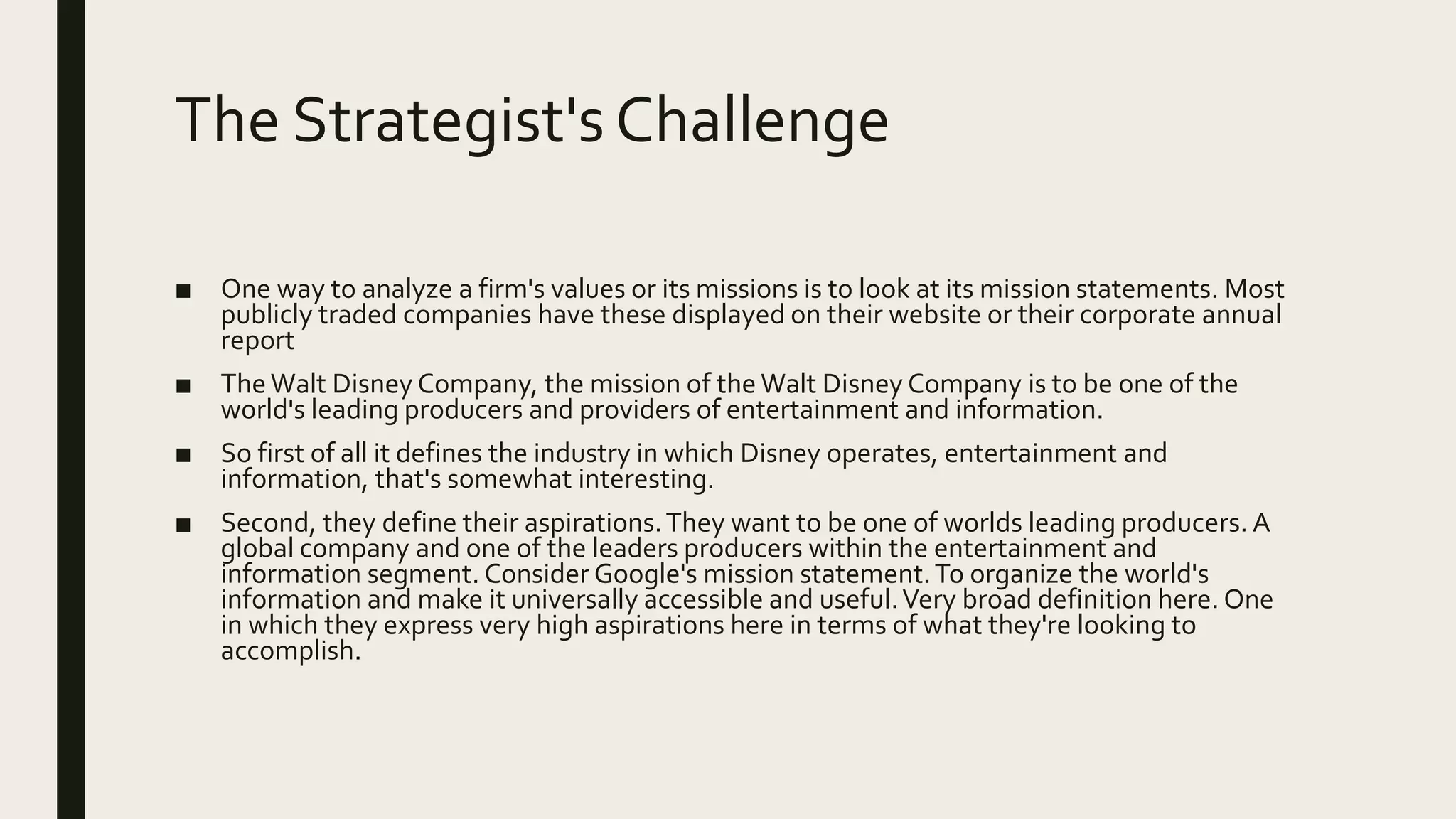The document discusses the fundamental principles of business strategy, introducing concepts of strategic analysis, competitive positioning, and the importance of defining a company's mission, objectives, and market contributions. It emphasizes the significance of understanding an organization's values, opportunities in the market, and internal capabilities to achieve a competitive advantage. Strategic analysis serves a broad range of stakeholders and is essential for making informed decisions and recommendations in a complex economic environment.
























































